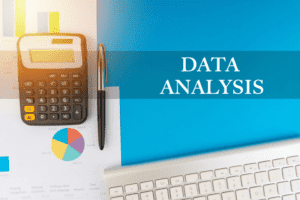
Further, as this example shows, the income and expense may offset each other only after several periods. If the realistic rate for January 2021 is 11%, then this person has received a substantial benefit and the company has incurred a substantial https://www.bookstime.com/ cost. For example, loans to officers are often no different from other receivables in terms of their size and collectibility. Trade discounts are reductions below a list price; they are used to establish a final price for the transaction.
Trade receivables and revenue
- But that term, accounts receivable, also refers to the department within an organization that’s responsible for tracking and collecting trade receivables.
- Materiality may be determined either on the basis of the size alone or on the basis that the transaction is unusual and should be fully disclosed.
- We’re firm believers in the Golden Rule, which is why editorial opinions are ours alone and have not been previously reviewed, approved, or endorsed by included advertisers.
- Through various transactions, a firm may have a legal claim against another entity that should be disclosed as a non-trade receivable.
This will communicate to customers when you expect to be paid, the currency you expect to be paid in, and how your customers can pay you. In the UK, standard payment terms are around 30 days from the date that the invoice was raised, also referred to as net 30. Furthermore, accounts receivable are current assets, meaning that the account balance is due from the debtor in one year or less. If a company has receivables, this means that it has made a sale on credit but has yet to collect the money from the purchaser. If you don’t keep track of them during the ordinary course of business, you might miss getting paid for goods or services provided, damaging profitability on your financial statements. On a balance sheet, they are put under your current assets with the expectation that they will be paid off within a year.

What Affects the Accounts Receivable Turnover Ratio?
trade receivables is the money owed to your business for credit sales of products or services. Nontrade receivables is the money owed to your business outside of the products and services sold (e.g., employee loans). They are classified as current assets but can be moved over to noncurrent assets if you expect that it will take more than a year to get them paid. Put simply, trade receivables are the total amounts that a company has billed to a customer for goods and services that they have delivered but haven’t yet received payment for. These amounts are reflected in the invoices that a company sends to its clients. Trade receivables are likely to be one of the largest assets on your company’s books, aside from inventory.
How can we determine if a company has uncollectible accounts?
The concept of expected credit losses (ECLs) means that companies are required to look at how current and future economic conditions impact the amount of loss. Credit losses are not just an issue for banks and economic uncertainty is likely to have an impact on many different receivables. If 20X0 was not Ingrid’s first year of operation she may have made an allowance for trade receivables at the end of the prior year. So, let us assume that Ingrid’s trade receivables totalled $400,932 as at the end of the prior year, and she had recorded an allowance for receivables of $12,028 at that date.

Trade Finance Receivables: A Growing Asset Class
Once again, the results can be skewed if there are glaring differences between the companies being compared. That’s because companies of different sizes often have very different capital structures, which can greatly influence turnover calculations, and the same is often true of companies in different industries. But in recent years, this lesser-known asset class has drawn increasing interest as an uncorrelated investment with low risk and the possibility of high returns. They are treated as an asset to the company and can be found on the balance sheet. Through various transactions, a firm may have a legal claim against another entity that should be disclosed as a non-trade receivable. For example, automobiles are sold to dealers at a percentage of the sticker price.
Trade receivables also referred to as accounts receivable, are the total amounts of money earned from the sale of goods and services which have been billed but haven’t been sent by the buyer yet. Or, in simpler terms, trade receivables represent profit yet to be received, earned from selling goods and services on credit. On the other hand, having too conservative a credit policy may drive away potential customers.
Would you prefer to work with a financial professional remotely or in-person?
This report is commonly used by the collections staff to collect overdue payments from customers. Trade receivables represent the outstanding amount owed to a business by its customers for goods or services delivered on credit. In simpler terms, it’s the money your customers haven’t paid you yet for products or services they’ve already received. They are classified as current assets on a company’s balance sheet, signifying their expected conversion to cash within a year. Trade receivables are defined as the amount owed to a business by its customers following the sale of products or services on credit. Also known as accounts receivable, trade receivables are classified as current assets on the balance sheet.
Free Online Courses With Certificates For High Income Skills In 2024
- Short duration and consistent returns make these assets a strong consideration for alternative fixed-income or cash management/treasury portfolios.
- Trade receivables are best handled regularly, including invoices with shipped products or provided services, with set scheduled follow-ups to ensure payment is made.
- However, there are variations on factoring that vary the balance of risk between the client and the financier known as non-recourse and recourse accounts receivable financing.
- Net credit sales also incorporates sales discounts or returns from customers and is calculated as gross credit sales less these residual reductions.
- Bills Receivable (B/R) is a bill of exchange accepted by a debtor or is received in way of an endorsement from them.
- On the other hand, debtors are the bill receivables that remain unfulfilled on the due date.
This is important because it directly correlates to how much cash a company may have on hand in addition to how much cash it may expect to receive in the short-term. By failing to monitor or manage its collection process, a company may fail to receive payments or be inefficiently overseeing its cash management process. Trade receivables represent the money owed to you by customers for whom you’ve provided products or services on credit – often an essential business practice.
Great! The Financial Professional Will Get Back To You Soon.
- Invoice factoring, for example, enables a company to sell its invoices to a factor at a discount, thereby receiving a percentage of the value of an invoice straight away.
- Nontrade receivables are also classified as current assets; however, they can be moved into noncurrent assets if payment is expected to take more than a year.
- In the UK, standard payment terms are around 30 days from the date that the invoice was raised, also referred to as net 30.
- The Asian Development Bank estimated that nearly 45% of SMB trade finance applications are rejected by banks and traditional lenders.
- IFRS 9 allows the use of practical expedients when measuring ECLs under the simplified approach – e.g. using a provision matrix.
However, you also need to establish a collection plan that can include follow-up invoicing, past due notices, or phone calls for those that don’t respond to your gentle reminder. Bills receivables are invoices that haven’t yet reached their due date and are still outstanding. Debtors, on the other hand, are invoices that are past their due date and still outstanding. AllBusiness.com is a business Web site that provides information and services to small businesses. Companies using the simplified model often use provisioning matrices that are based on historical data. This may include considering the need for additional scenarios and the impact of any government support schemes.
